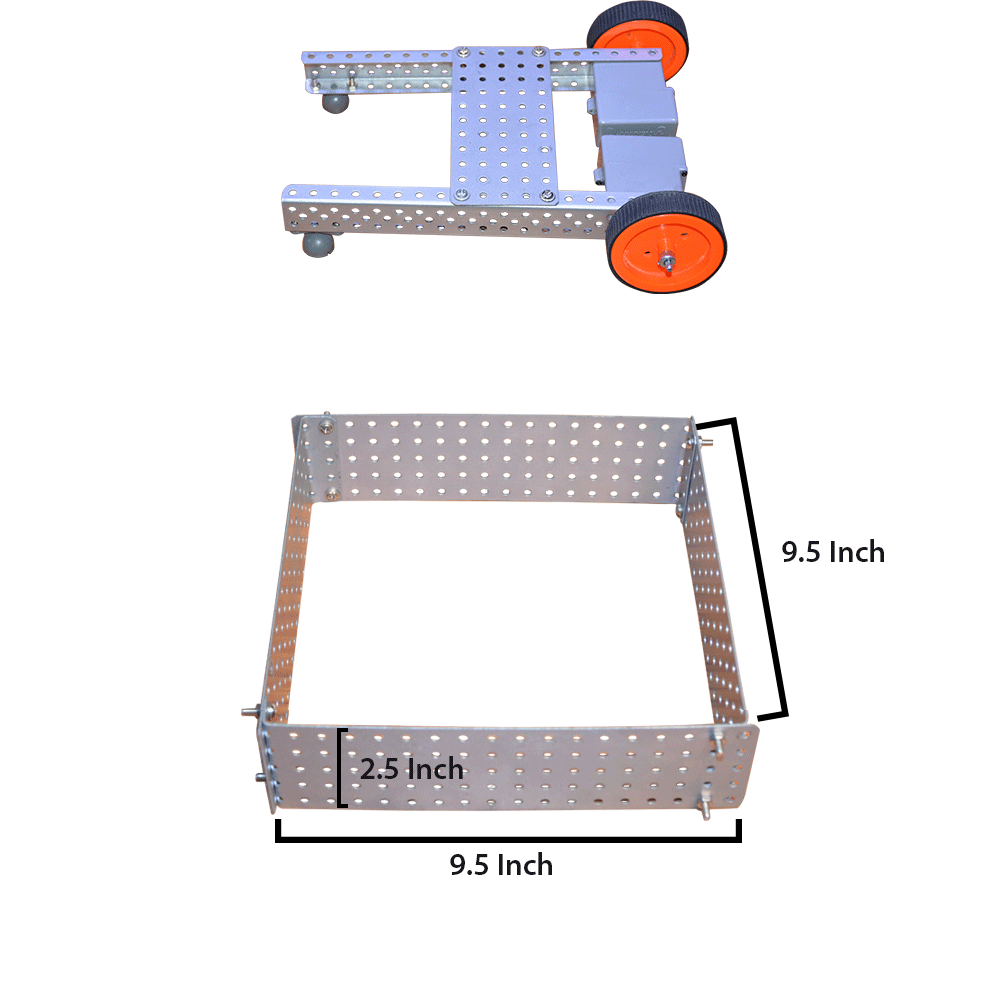IRC INTERNATIONAL
JUNIOR LEVEL PROBLEM STATEMENT [PROVISIONAL]
Problem Statement
To build two Manual bots that can carry out the task of transporting the waste generated in a factory to different collection zones.
Real World Inspiration
Tonnes of industrial waste is generated each year that needs to be treated properly and not just dumped into landfills or oceans. Such waste must be collected at proper centres or designated places for further processing and treatment.
Actual Task Description
Robots are tasked with collection/pick-up/dragging of the props to the two collection zones and create a pre-defined structure. Props are 3D printed cubes that can be stacked to form a structure.
Bot Information
| Name of the bot | Start Area | Maximum Size | Task |
|---|---|---|---|
| Bot 1 - Name of Bot needs to be decided by the participants | Start Area No. 1 | Length: (9.5 Inches Width: 9.5 Inches) Height: No limit | Bot 1 needs to help bot 2 while loading / unloading props. Bot 1 also needs to perform stacking at zone 1 and zone 2 in the arena |
| Bot 2 - Name of Bot needs to be decided by the participants | Start Area No. 2 | Length: (9.5 Inches Width: 9.5 Inches) Height: No limit | Bot 2 needs to carry the props to various zones in the arena |
Arena Information
Start areas
Start Area 1 refers to the area where the first bot would be placed at the start of the arena run and Start Area 2 refers to the area where the second bot would be placed at the start of their arena run.
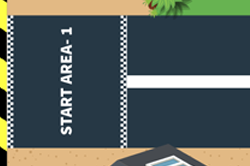
Start Area 1
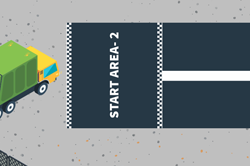
Start Area 2
Collection Zone
Collection area is that area on the arena where all the props would be kept before starting the run.
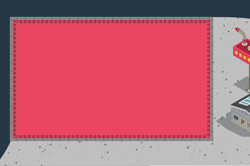
Track
The Track refers to the area where the bots need to move and carry the props from one zone to another.
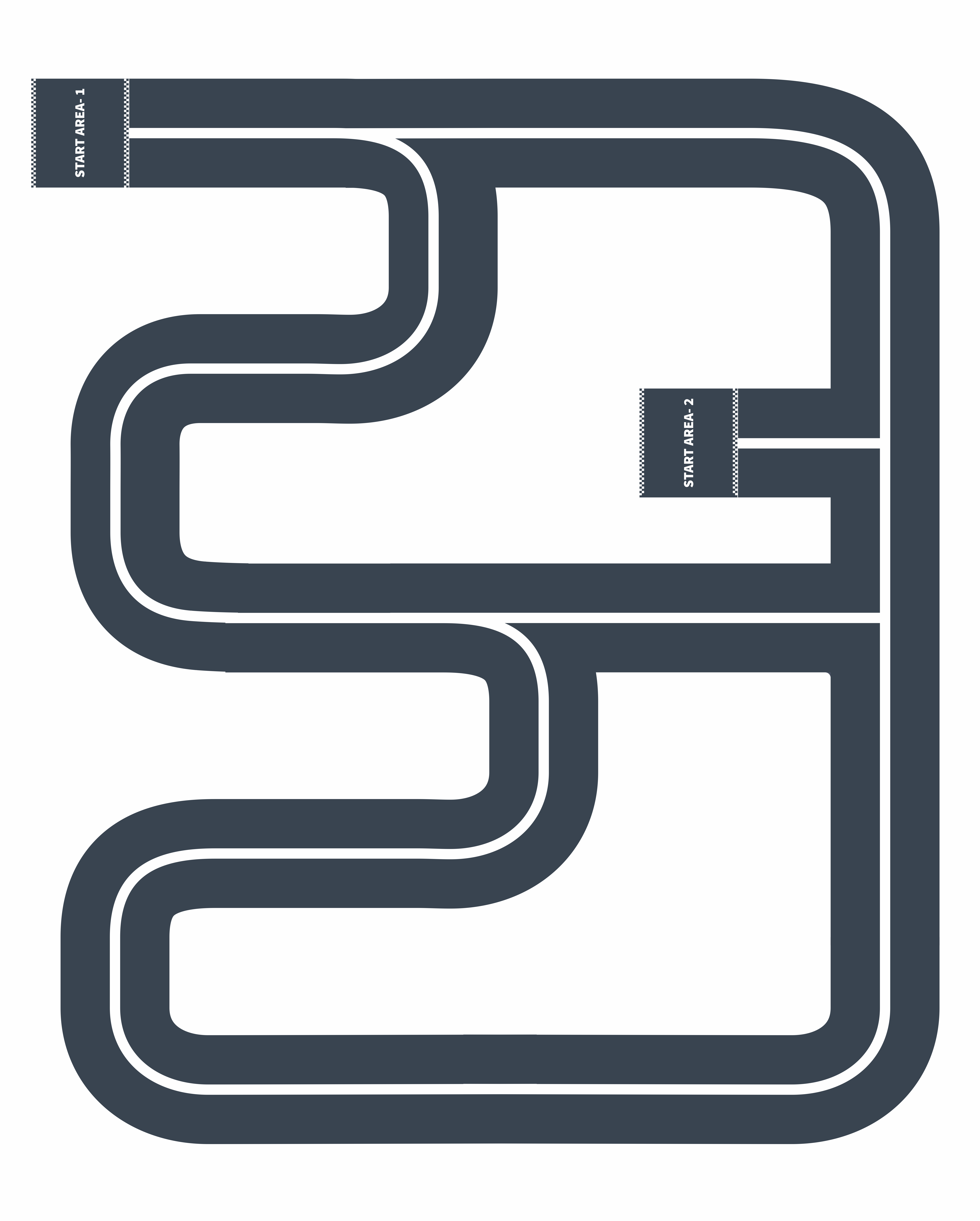
Track
Stacking Zones
These are the identified areas where the required stacks need to be built. Zone 1 is that area on the arena where bot 1 needs to build Stack 1. Zone 2 is that area on the arena where bot 1 needs to build Stack 2.
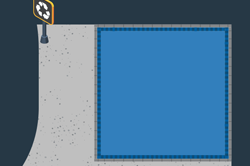
Zone 1
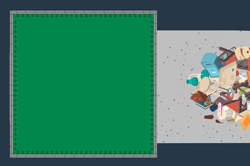
Zone 2
Arena & Props
| Arena Length : | 123 Inches(Including Boundary) | 117 Inches(Working Area) |
| Arena Width : | 99 Inches(Including Boundary) | 93 Inches(Working Area) |
| Arena Boundary : | Height - 6 Inches | Height - 6 Inches |
Working Area need to be kept in mind while designing the bots. Bot should never attempt to cross working area. A boundary may be kept along the border (out of working area) and this boundary position and orientation may differ from Arena to Arena and time to time. It shouldn't matter to bots being designed by keeping working area in mind.
Arena Details
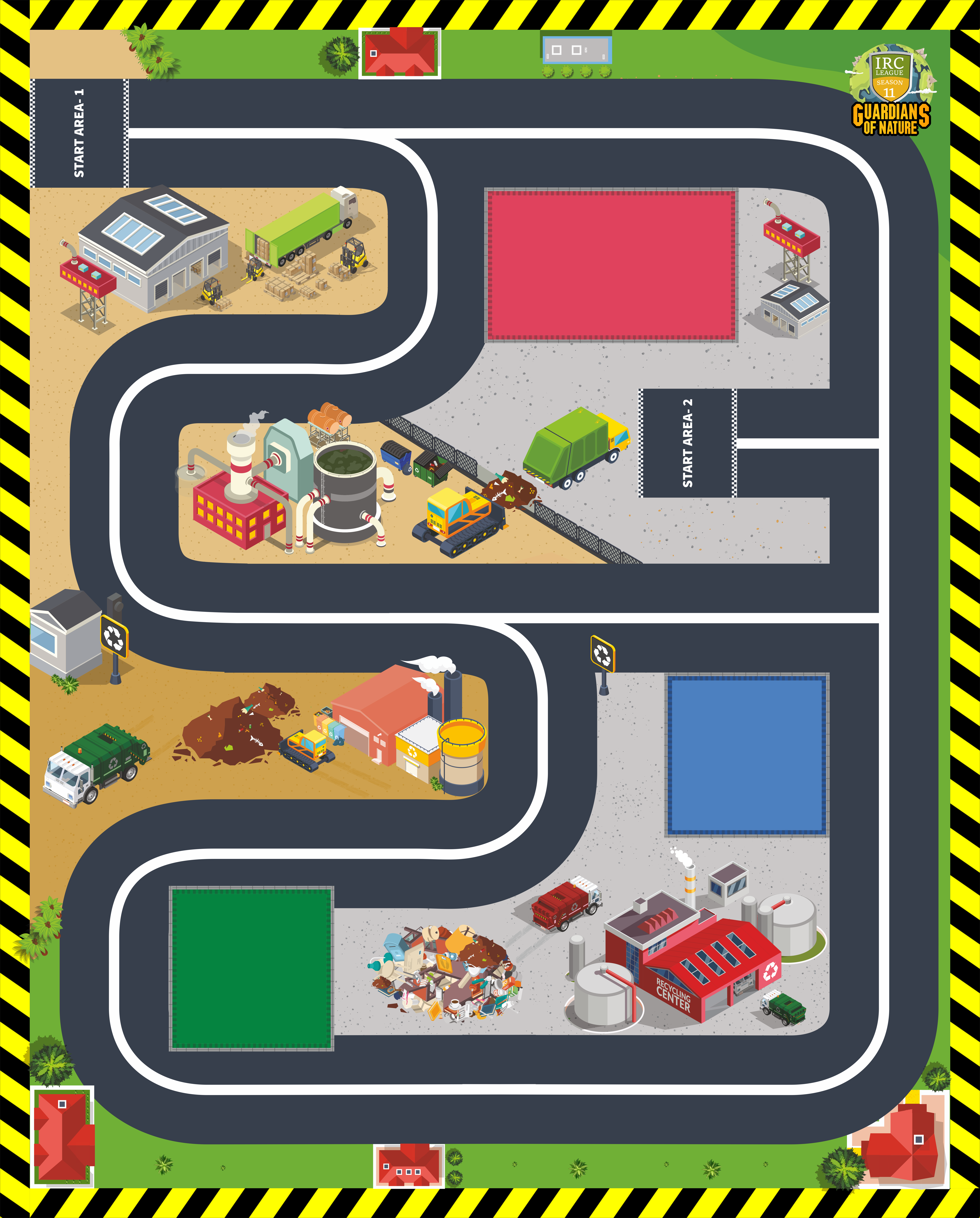

Prop Details
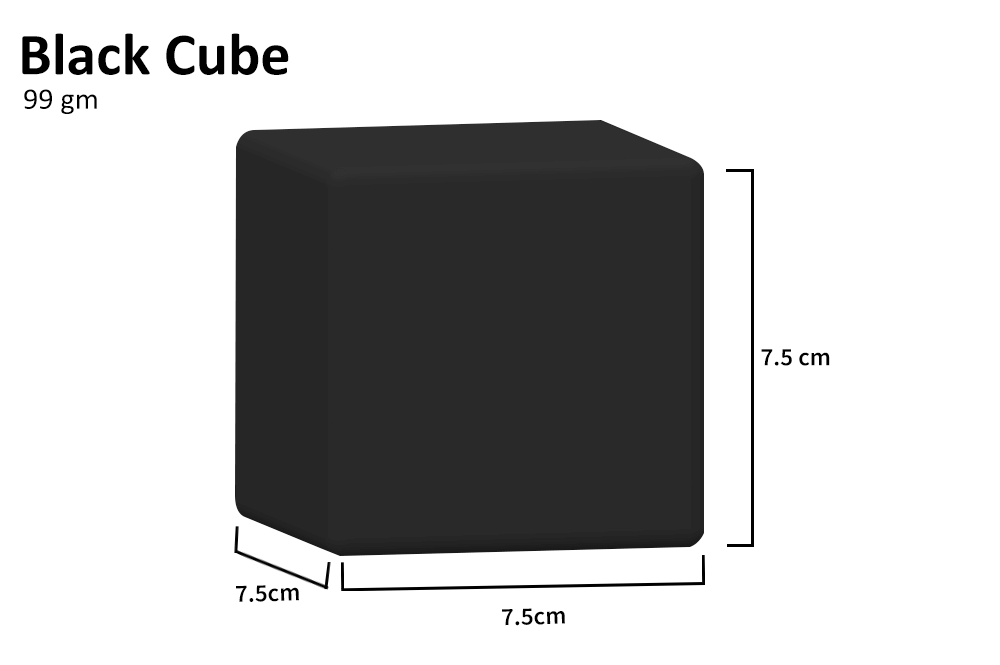
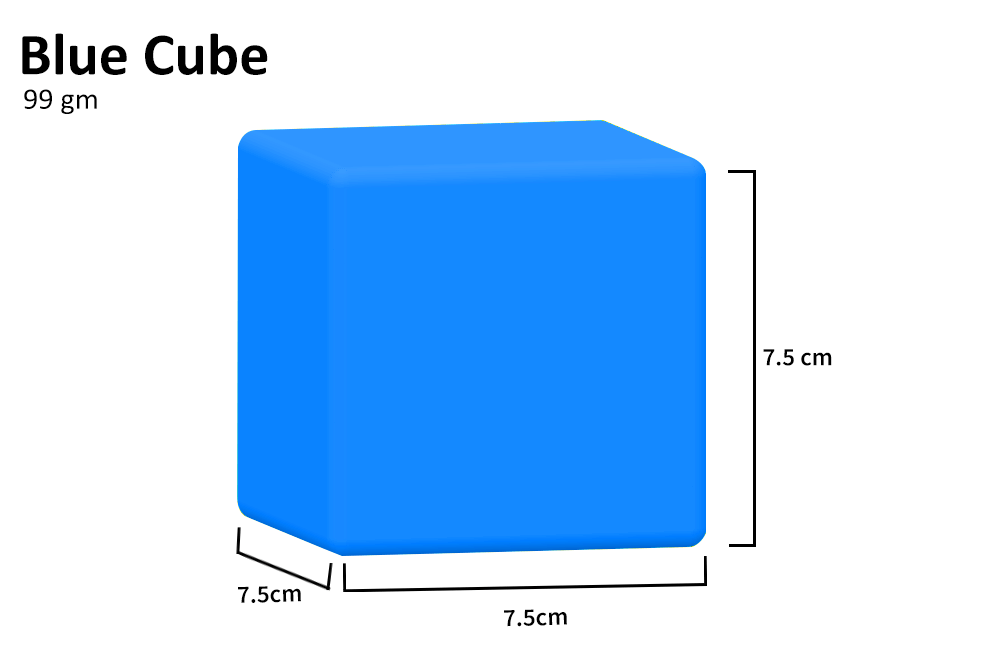
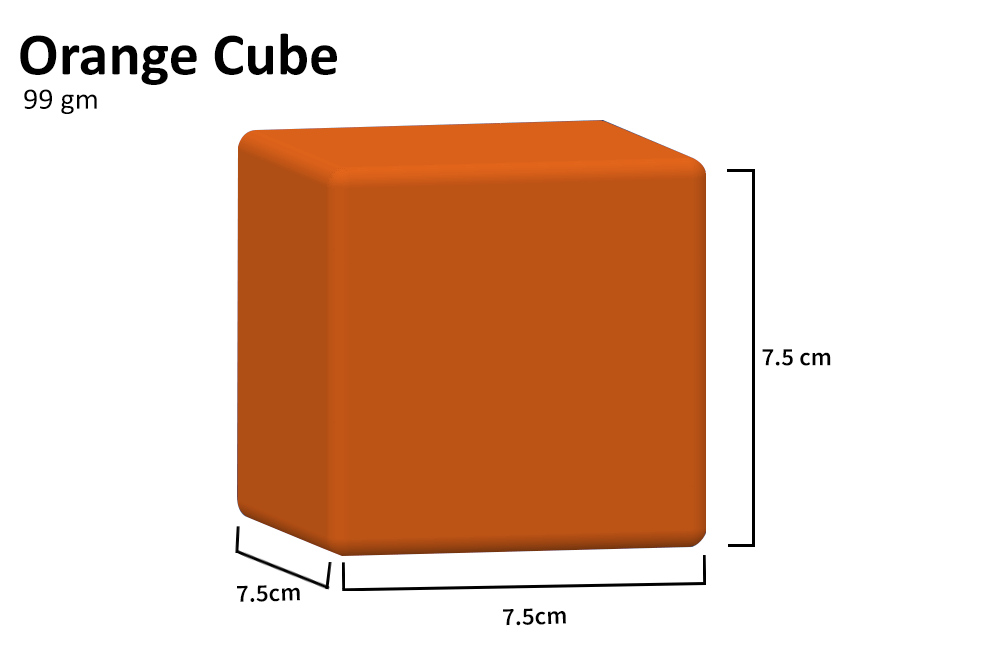
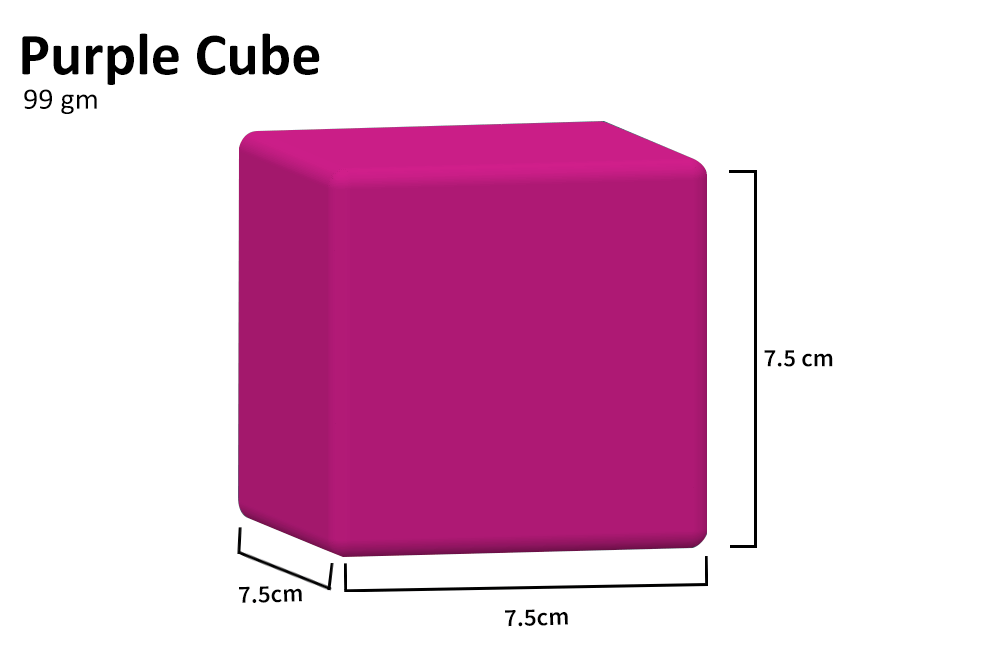
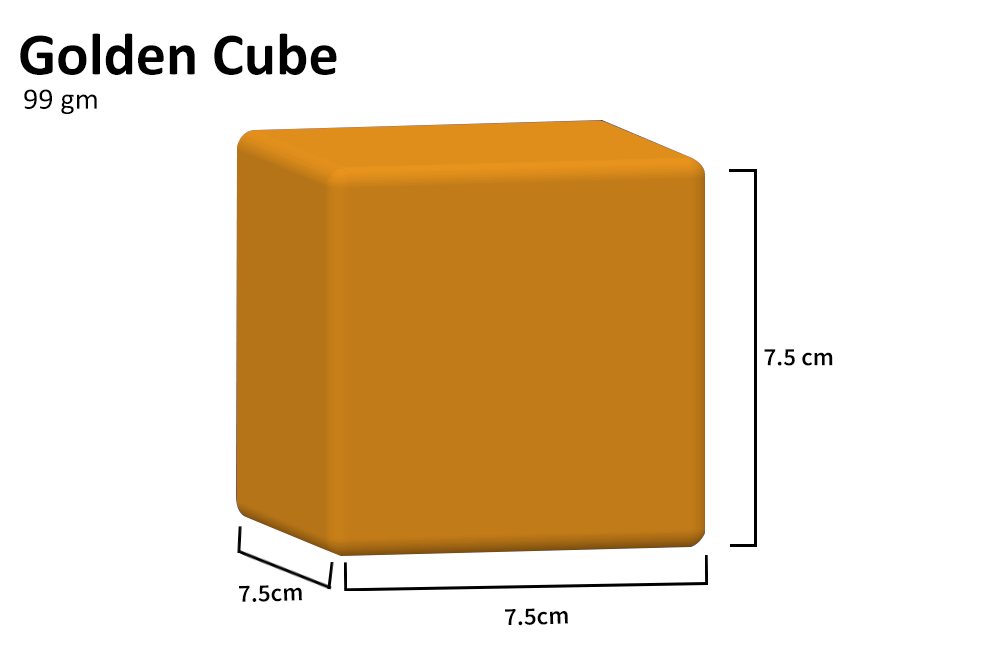
Props Description
The total number of props will be 12, distributed in the manner given below
| Black | 2 |
| Blue | 2 |
| Orange | 4 |
| Golden | 2 |
| Purple | 2 |
Stacks: Figures
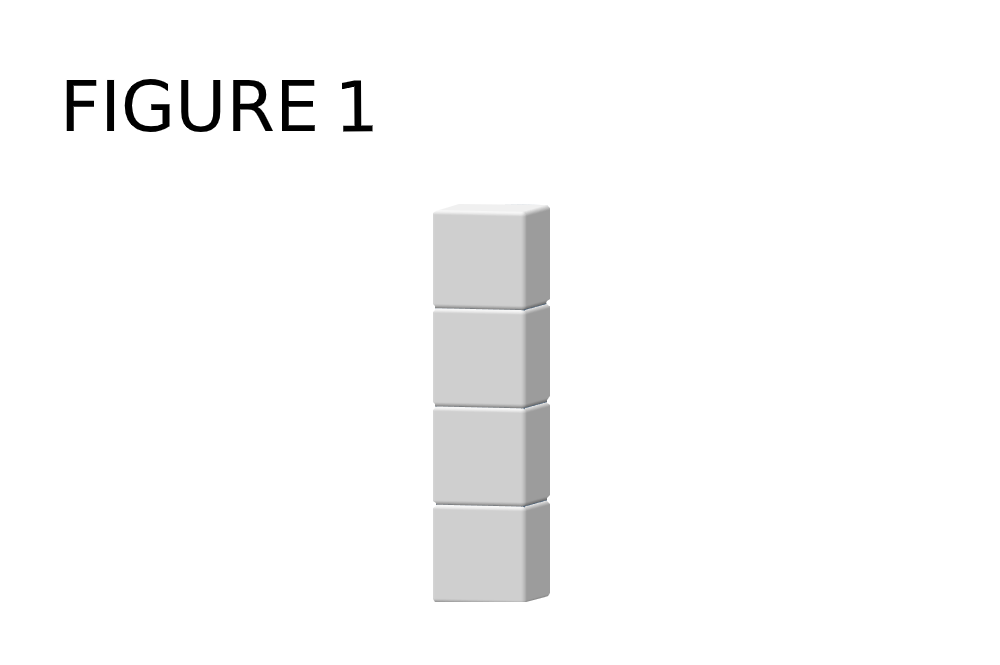
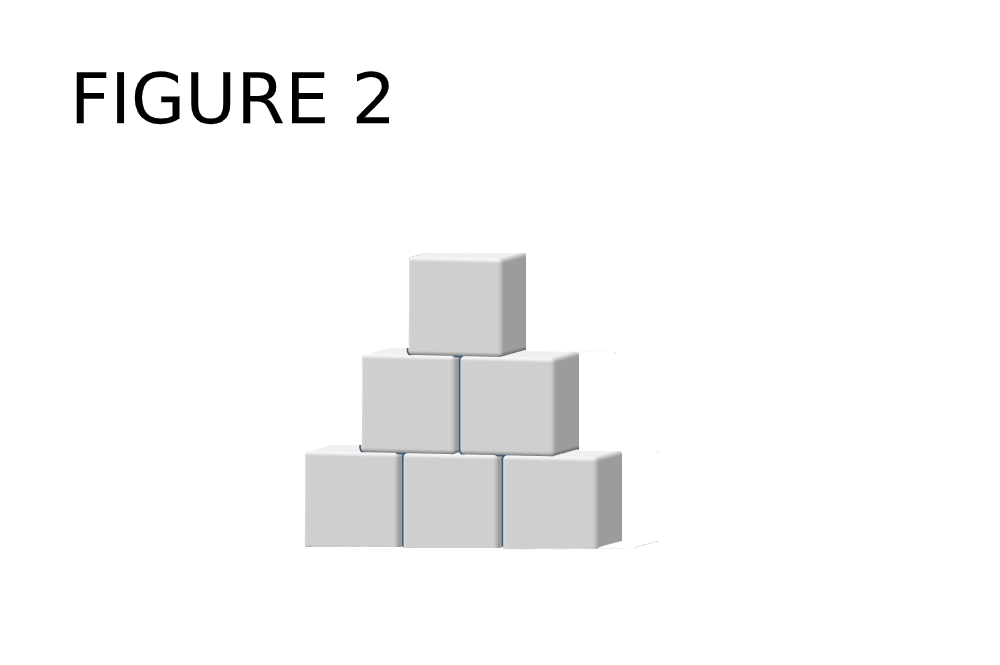
Arena Tasks
Tasks of Bot 1:
- Bot 1 needs to collect the props from collection zone and load the props onto bot 2.
- Bot 1 will then unload the props from bot 2 and stack the props inside the zone 1 as per the arrangement scheme (refer to the section ARRANGEMENT SCHEME). The Stack must resemble the Stack Figure 1
- Bot 1 will then have to unload the props from bot 2 and stack the props inside the zone 2 as per the arrangement scheme (refer to the section ARRANGEMENT SCHEME). The Stack must resemble the Stack Figure 2
Tasks of Bot 2:
- Start Position: Start Area 2
- Once bot 2 is fully loaded with prop, it needs to move to zone 1 and unload itself with or without the help of bot 1.
- If required, bot 2 needs to be loaded again by going back to the collection zone.
- Bot 2 needs to reach zone 2 and unload itself with or without the help of bot 1.
- End Position: Any where within Arena
Deviation: When any of the bots move out of the track (completely i.e.no part of the robot is in contact with the Track), a Deviation will be marked. Collection area, zone 1 and zone 2 are the exceptions i.e. bots can freely roam inside the mentioned areas. This also means that during the arena run any of the ground touching part of the bots must be in contact with track or collection area or zone 1 or zone 2. Even a single Deviation by any bot will result in end of the game for the team and scores achieved so far will become the final scores.
NOTE: Props can only be carried by bot 2 from collection zone to Zone 1 / 2.NOTE: While unloading the props, the team needs to make sure that the prop(s) doesn’t move out of the zone 1 / 2, where either of the bots cannot reach. In such a situation, that prop(s) cannot be brought back and the task cannot be considered as complete. Loading / Unloading can only be done while the bot is present on the part of the track that is in contact with the respective Zones.NOTE: There is no colour sequence for stacking the Figure 1 and Figure 2. The stacks must structurally resemble Figure 1 and Figure 2
Arrangement Scheme
Each coloured prop corresponds to a particular weight as mentioned below
Both the zones ( Zone 1 and Zone 2 ) have some particular weight allowances and space i.e. only fixed amounts of equivalent weight and number of props can be accepted by the respective Zones.
Zone 1 will accept only 4 props and zone 2 will accept only 6 props.
For example,
If the weight allowance of zone 1 and zone 2 is 600 tonnes and 700 tonnes respectively.Bots can place 2x black and 2x orange props in zone 1.
Total weight calculation
2x black = 500 tonne
2x orange = 100 tonne
Total weight = 600 tonne
Total number of props in zone 1 = 4
Note : Team has to take care of the fact that only 4 props can be accomodated in zone 1.
Similarly for zone 2,
1x blue, 1x purple, 2x golden and 2x orange should be placed inside zone 2.
Total weight calculation
1x blue = 100 tonne
1x purple = 200 tonne
2x golden = 300 tonne
2x orange = 100 tonne
Total weight = 700 tonne
Total number of props in zone 1 = 6
Note : Team has to take care of the fact that only 6 props can be accomodated in zone 2.The weight allowances of each zone will be a random selection and will be decided at the arena (before the run). The link is also available to everyone for practicing.The teams must do the correct calculation to arrange the props in the correct manner and score points.Click Here: Weight Allowance
Important Points during the run
- It is the responsibility of the team to make sure they call DONE when the structure is ready and well within the designated areas.
- "Calling out DONE" doesn't necessarily mean to call out the word done, it means that the team should indicate to the referee in any manner that the team is done with the run and would want to get the scores.
- If the base of the stack is not within the designated area, no score will be awarded (irrespective of any formation on top).
- Bonus points will be awarded only when all the tasks of the run are completed fully. This also means that the second run will not be provided.
Scoring
Type of Scoring - Mid match / End of match
| Task description | Score for each prop | Total Score |
|---|---|---|
| Successfully able to load the props on bot 2(Points will be awarded to each prop) Scoring Method: Mid Match |
10 | 100 |
| Successfully able to place the props inside zone 1 as per the weight allowance. (Points will be awarded to each prop) Scoring Method: End Match |
70 | 280 |
| Successfully able to create the Stack at zone 1. NOTE: 26 points will be awarded for each prop stacked correctly as per the figure 1 . No points will be awarded if stack is not/partially inside the designated zone. Scoring Method: End of Match |
26 | 104 |
| Successfully able to place the props inside zone 2 as per the weight allowance. (Points will be awarded to each prop) Scoring Method: End Of Match |
70 | 420 |
| Successfully able to create the Stack at zone 2. NOTE: 16 points will be awarded for each prop stacked correctly as per the figure 2 given in the arrangement scheme. No points will be awarded if stack is not/partially inside the designated zone. Scoring Method: End of Match |
16 | 96 |
The Scoring Methods
There are two ways scoring can happen for a run:
- END-OF-MATCH SCORING - Most of your score depends on the conditions/design of props/arena exactly at the end of the match. Following are important reference points for this kind of scoring:
- The arena/props are the evidence of most of your score. When the run ends, PLEASE DON’T TOUCH ANYTHING! The referee first needs time to record the condition of the arena on a score sheet and come to an agreement with you (students only) about what points were scored or missed and why.
- Points aren’t given for results the robot produces during the match but then disturbs before the end. For example, you might have kept a prop at a designated location during the run, but in a bid to complete other tasks, if that prop is disturbed and stays in that situation at the end of the match, no scores will be rewarded.
- MID-MATCH SCORING -If a team’s score is permanently determined during the match, instead of at the end.
- EXAMPLE: When a mission is required to be achieved through a specific method but is achieved by some other method, it is marked scoreless. Please don’t try to show the video to the referees.
- EXAMPLE: If the robot puts Model A into a scoring condition by destroying Model B, the Model B mission is marked scoreless and vice versa.
- EXAMPLE: If the robot is required to drive over something in the middle of the match, the referee will mark the score for that when it happens, since no lingering evidence will be visible.
Bonus Score
If a team is able to finish all the tasks before time (100% of a run), a score of 5 points will be added with every 5 seconds of the time left.
For example: From the total time of 6 minutes, if the task was completed at 5 minutes 30 seconds mark, so 30 points will be added to the final score.
If the task was completed at 5 minutes 34 seconds so 25 points will be added to the final score.
Conflict Process
- If a team agrees with the score, the team’s leader needs to sign the sheet, and the score is final.
- If you don’t agree, tell the referee nicely. Referees can be wrong, and when they are, they want to know.
- If still there is a conflict, you need to tell the referee and then follow the Conflict Raising process.
- In such situation, the case will be referred to Chief Referee. The Chief Referee’s decision would be final and binding.
- After a short discussion, if the referee is not sure about the score, the Chief Referee will make the final decision.
Junior Level Rules and Regulations
- The duration of the run will be 6 minutes and there won't be any trial time provided for the run on the event day.
- Deviation: A total of 1 deviation (2 runs) is allowed during the whole arena run of 4 minutes. Remember this count (2) is for both the bots. In such a situation, the run need to start again and the referee would bring the deviated bot to its respective start area.
- Time will not be paused in case the bots deviate from its path.
- Scores will be given only if the props are dropped completely into the designated area, not partially, not on the line.
- Only Avishkaar kits are allowed to build these robots.
- A power source of 7.4 Volts and 2200 mAh current is allowed in the bots.
- Participants can touch the robots only when they are in the start areas (Overruling this can lead to disqualification) and nowhere else. They can repair their robots at the Start Area in case of damage in the robot.
- If robots got stuck with each other or toppled over, only the referee will keep the robot or will allow any of the team member to keep it at the respective start area/areas.
- If any of the robots go out of the arena, the referee would bring it back to the respective Start Area and the props (if they were attached to the robot in some manner) to their respective start locations and no points would be awarded to the team.
- If a team is able to finish all its tasks before time, a bonus of 5 points per 5 second will be added to their final score.
- During the arena run if by any means the arena/props got damaged then the referee can disqualify the team.
- Bots are not allowed to move outside the Track (Including white area). Doing so will be marked as a deviation of the robot.
- Both robots should be identifiable preferably by a sticker.
- It is mandatory to mention Name and Number on your bots. (For example: JCB - 06)
Interpretation
- Problem statement text means exactly and only what it says, so take it literally.
- Do not interpret text based on your assumption about intent, or on how a situation might be in “real life”.
- If any particular detail isn’t mentioned, then it doesn’t matter.
- There are no hidden requirements or restrictions. If you’ve read everything, then you know everything.
Examples
- If a task requirement is to collect the prop, then that means the prop should be in control and attached with the robot.
- If a mission requirement is to place the prop at the designated location, this means the prop should be completely inside the designated area. It will not be considered if it is partially inside or on the line.
- You’re encouraged to think this way - please learn the requirements and constraints very well, tasks need to be done as explained in the task description only.
Variability
As you build and program, keep in mind that our suppliers, mentors, and volunteers try very hard to make all arena and props as per the specifications mentioned, but you should always expect some variability (i.e. tolerance of 5%) due to machine/manual process and transportation. Consider this as a warning and incorporate them into your robot design. The variabilities can be defined as:
- Flaws in the arrangement of border walls i.e. boundary mats.
- Variety in lighting conditions, from hour to hour, and/or arena to arena.
- Texture/bumps under the mat, due to imperfections, seams, or props.
- Presence or absence of tape at the edges of the arena and props.
- Waviness in the arena itself - at many competitions, it’s impossible for the arena to be rolled out in time to lose their waviness. The Location and severity of waviness varies. You are being warned here. Please consider this while designing your robot.
- Two important building techniques you can use to limit the effects of variability are:
- Use caster wheels while building your robot to avoid bumps in the arena.
- Cover your sensors from surrounding light.
Explanation of the parts that can be used
Brains: There is no limitation on the number of brains used per robot. Choose from the Avishkaar-manufactured ones shown here.
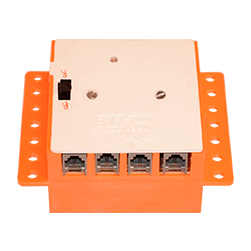
CP Lite Brain
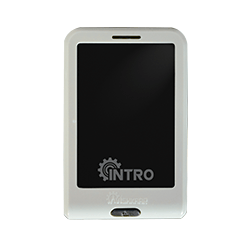
E-Series Intro Brain
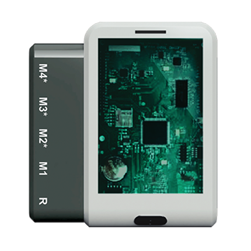
E-Series Lite Brain
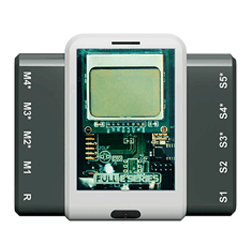
E-Series Full Brain
Motors: There is no limitation on the number of motors used per robot. Choose among the Avishkaar-manufactured ones shown here. No other motors are allowed.
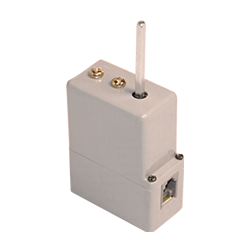
Geared Motor
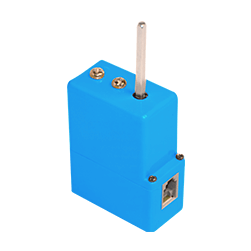
Encoded Motor
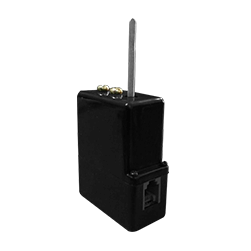
Geared Motor
Reference for the placement of props/Robots
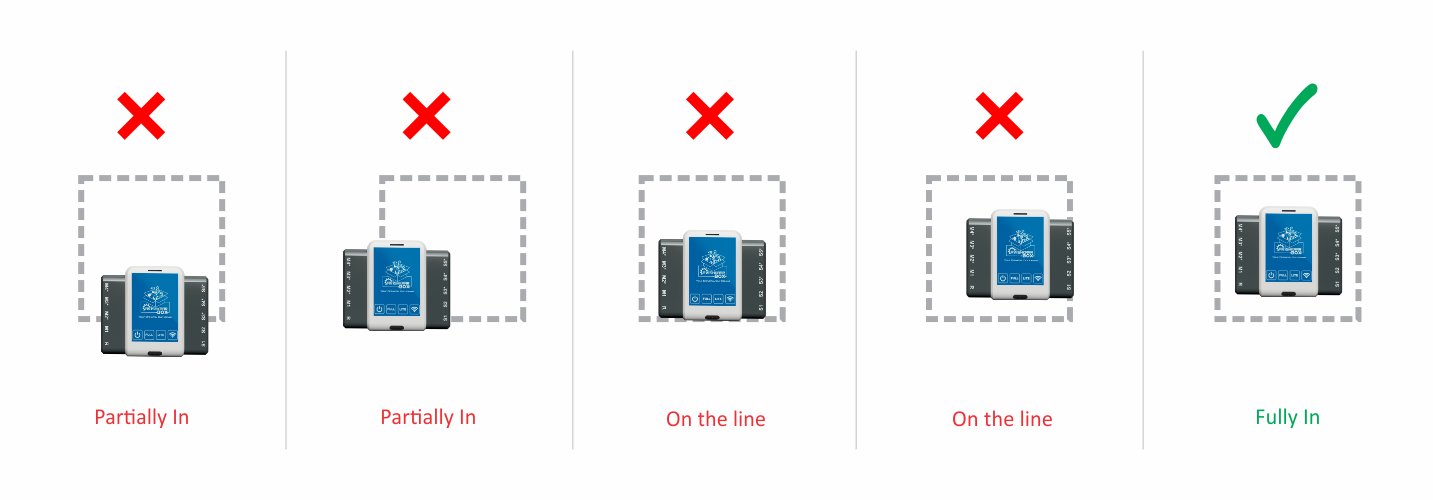
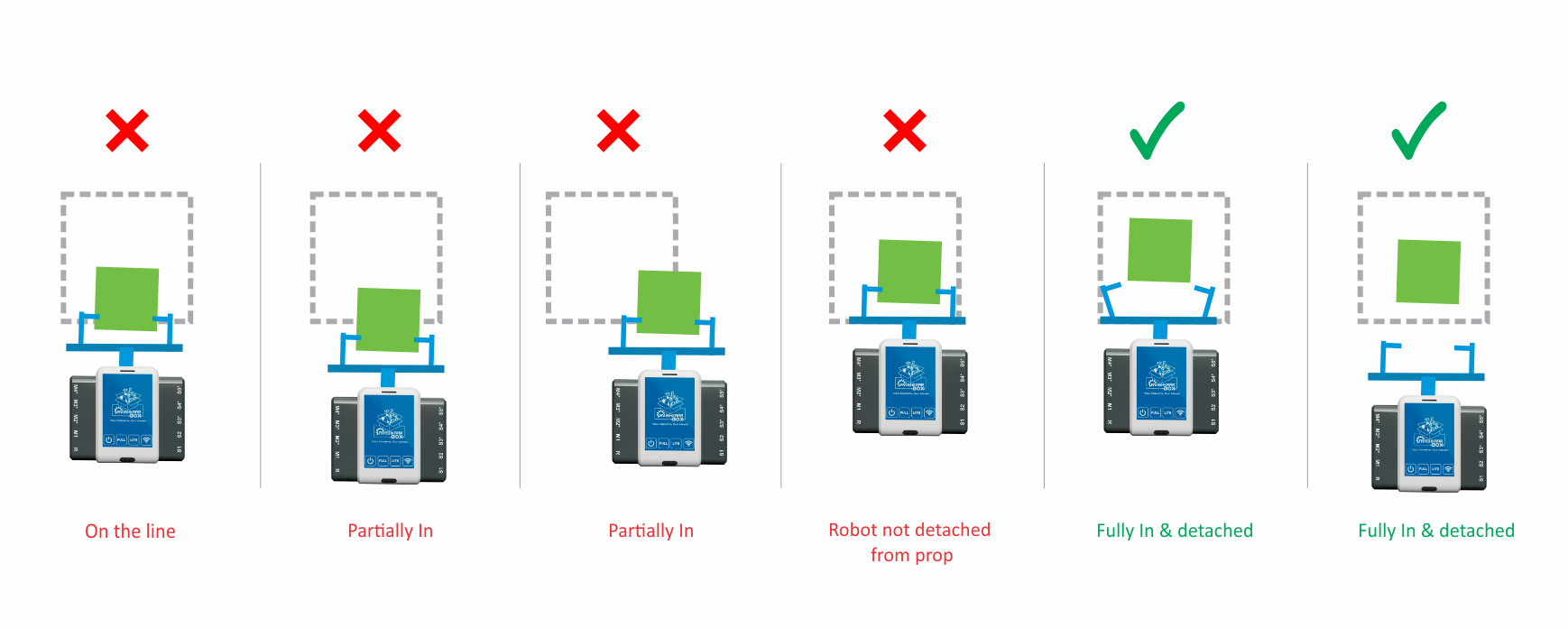
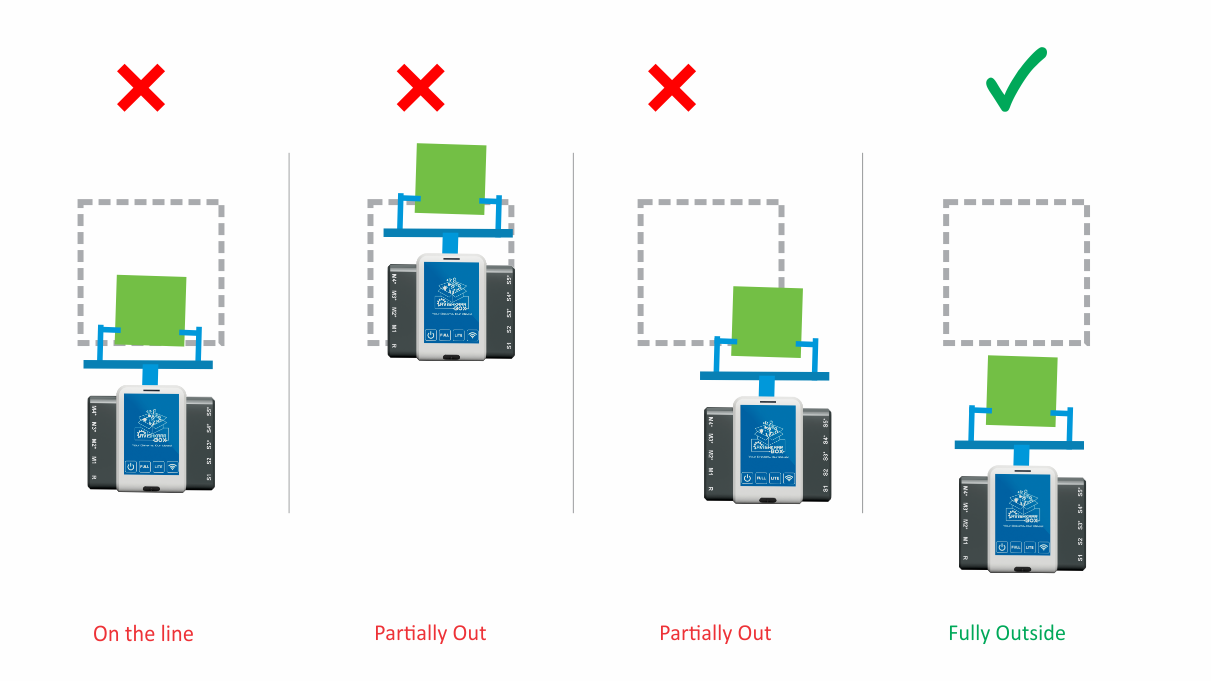
Verification of Robots
|
Note: The design shown in the image is a graphical image and no design reference must be drawn from this. For your design, please refer to the exact size details of the verification prop. Note: Bot should sit comfortably on the floor during verification. Any wheel of the bot which is in the air would be liable for rejection. Note: The wheels of the bots need to be clean and shouldn't have any greasing or other material. Such actions can cause damage to the Arena and these bots will be rejected during verification. Note: Only Avishkaar Original Products are allowed. Any tempering with any product in any way is strictly prohibited. If a team is found guilty of such offence, will be barred from the IRC. |

